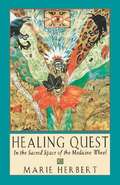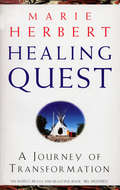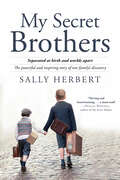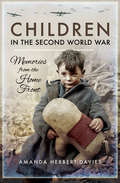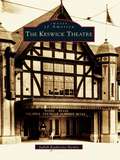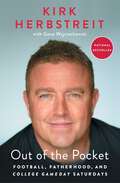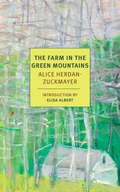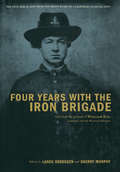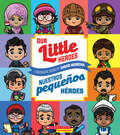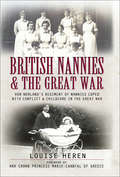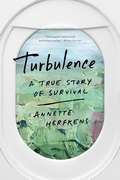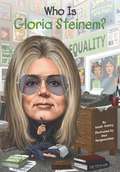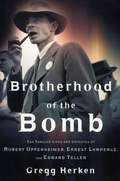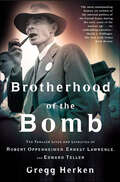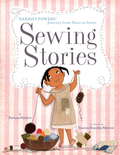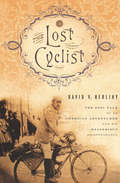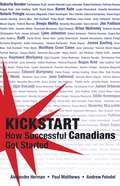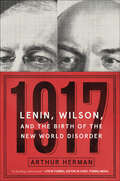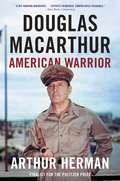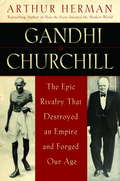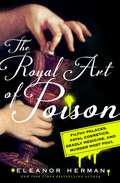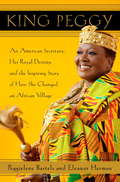- Table View
- List View
Abraham Lincoln for Kids: His Life and Times with 21 Activities
by Janis HerbertProviding a fresh perspective on one of the most beloved presidents of all time, this illuminating activity book tells the rich story of Abraham Lincoln's life and details the events of his era. Highlighting Lincoln's warm, generous spirit and impressive intellect, the guide teaches children about his fascinating life story, his struggles at the onset of the Civil War, and his relevance in today's world. Activities include delivering a speech, holding a debate, drawing political cartoons, and making a stovepipe hat or miniature Mississippi River flatboat. Lively sidebars, abundant photographs and illustrations, and fun projects help to kick the dust off old Honest Abe. Also included are selections from some of Lincoln's most famous speeches and documents, as well as a resource section of Web sites to explore and sites to visit, making this a comprehensive Lincoln biography for young readers.
Leonardo da Vinci for Kids: His Life and Ideas, 21 Activities (For Kids series)
by Janis HerbertThe marriage of art and science is celebrated in this beautifully illustrated four-color biography and activity book. Kids will begin to understand the important discoveries that da Vinci made through inspiring activities like determining the launch angle of a catapult, sketching birds and other animals, creating a map, learning to look at a painting, and much more. Includes a glossary, bibliography, listing of pertinent museums and Web sites, a timeline, and many interesting sidebars.
Ahora imagino cosas
by Julián Herbert«¿Herbert escribe memorias? ¿Ensayos? ¿Novelas? Sus libros son mash-ups de recuerdos, investigación y ornamentación ficcional, marcados por una cálida falta de respeto por los géneros -como es la vida.» The New York Times Si, como dijo Alfonso Reyes, el ensayo es el centauro de los géneros, la crónica es un mestizo más exótico o salvaje: el grifo de la literatura. Este libro es una jaula sin barrotes donde merodean algunas de esas criaturas: la marchita eternidad de Acapulco y la vocación de Mazatlán como food court del alma; una temporada de rockstar en el desierto y un recuerdo del Mundial de Alemania 2006 robado por el autor a un examante de su novia; un hotel en Shanghái donde toca la banda de jazz más antigua del mundo y la visita de la reina de Inglaterra al puerto de La Paz, Baja California Sur; el brutal asesinato de una adolescente chilena en la región del Maule y un retrato a mano alzada del Fiscal de Hierro, persecutor de guerrilleros suicidas, homeópatas marxistas y gavillas narcomatriarcales que protagonizó la lucha contra la delincuencia organizada en los años setenta en Nuevo Laredo. Las ocho narraciones de este libro realizan una de las suertes mayores de la literatura: ir de lo íntimo a lo general, o viceversa. También nos recuerdan que no hay promesas sin resaca.
Healing Quest: The Sacred Space of the Medicine Wheel
by Marie HerbertWhen her youngest daughter, Pascale, was preparing to leave for boarding school, Marie Herbert wanted to mark the end of the child-rearing phase of her life by a rite of passage. Wishing to find a new life-path for herself, she planned to go on a vision quest-a journey of personal transformation-under the guidance of Native American healers. Pascale's sudden, tragic death made-Herbert's odyssey far more poignant and urgent than she could have imagined. Healing Quest is the extraordinary description of Marie Herbert's inner and outer journey toward a renewed wholeness. She traveled through the southwestern United States, meeting with different Native American shamans, master storytellers, and medicine people. These healers kept suggesting that she shouldn't go through with her preconceived notion of the vision quest, and that she should, instead, listen to what her spirit needed. During her journey, she met Jamie Sams, creator of The Sacred Path and Medicine Cards, who convinced her that the fasting required in a vision quest was not "the feminine way." With Sams' help, Herbert realized that her spirit yearned for the feminine energy of a healing quest. Herbert offers a fascinating account of the Native American ceremonies and rituals in which she participated before the climax of her transformation-four days and nights alone and apart, seeking wholeness within the sacred space of the medicine wheel.
Healing Quest: A Journey of Transformation
by Marie HerbertWhen her two daughters were approaching the finish of their education Marie Herbert felt the need to mark the end of the child-rearing phase of her life by a rite of passage, a way to find herself a new place in the grand scheme of things. Long drawn to the Native American spiritual tradition, she planned a visit to the United States and an extraordinary journey of personal transformation under the guidance of Native American Healers. However, the end of her time of motherhood coincided tragically with the sudden death of one of her daughters and so her odyssey was to become far sadder and more urgent than she could have imagined. HEALING QUEST is the fascinating description of Marie Herbert's inner and outer journey of the heart. Vivid portraits of the people she met along the way are combined with honest accounts of the change in her feelings - together with ideas about how the readers, too, may learn from what she experienced and so gain insights into his or own life, whether in practical, emotional or spiritual terms.
My Secret Brothers: Separated at Birth and Worlds Apart, the Powerful and Inspiring Story of One Family's Discovery
by Sally HerbertA daughter’s search for her mother’s hidden past reveals long-kept secrets and lies that change both their lives forever Born out of wedlock in Dublin in 1937, Phyllis grows up in a brutal, church-run orphanage. She thinks that if she fulfils her dream of becoming a nurse in England, her life might change for the better. But the feelings of worthlessness instilled by the orphanage perpetuate a series of poor choices. Predisposed by her loveless childhood to a loveless marriage, Phyllis sees her life spiralling out of control, and her daughter, Sally, suffers the repercussions. As her mother’s health deteriorates, Sally tries to understand why it seemed inevitable that her mother’s life and her own would go so spectacularly wrong. Confronted by doubts, she asks questions about Phyllis’s true identity. Who was she? Why was she abandoned? Sally needs to find the answers before it’s too late.After a mission that lasts nearly a decade, searching archives and contacting countless organizations and anyone who will listen, Sally finally uncovers the truth and opens the door to a world so many of us take for granted.
Children in the Second World War: Memories from the Home Front
by Amanda Herbert-Davies&“Stunning photographs&” and firsthand accounts propel a book that &“brings together the memories of more than 200 child survivors of the Blitz&” (Daily Mail). It was not just the upheaval caused by evacuation and the blitzes that changed a generation&’s childhood, it was how war pervaded every aspect of life. From dodging bombs by bicycle and patrolling the parish with the vicar&’s WWI pistol, to post air raid naps in school and being carried out of the rubble as the family&’s sole survivor, children experienced life in the war zone that was Britain. This reality, the reality of a life spent growing up during the Second World War, is best told through the eyes of the children who experienced it firsthand. Children in the Second World War unites the memories of over two hundred child veterans to tell the tragic and the remarkable stories of life, and of youth, during the war. Each veteran gives a unique insight into a childhood that was unlike any that came before or after. This book poignantly illustrates the presence of death and perseverance in the lives of children through this tumultuous period. Each account enlightens and touches the reader, shedding light on what it was really like on the home front during the Second World War.
Keswick Theatre, The (Images of America)
by Judith Katherine HerbstThe Keswick Theatre, located just outside Philadelphia, opened in 1928 in an era when four thousand similar structures were in various stages of design and construction across the country. Vaudeville was in its final days and film was just being born. Designed by acclaimed architect Horace Trumbauer, the theater evolved into the area's premier movie house. When the theater was threatened with demolition in the early 1980s, the Glenside Landmarks Society was formed with the hopes of restoring the building to its former grandeur. Today, operating as a commercial venture, it is one of the most acclaimed concert halls in the Philadelphia area. The Keswick Theatre celebrates this historic landmark through vintage images and recognizes the dedicated community members who have kept its doors open.
Out of the Pocket: Football, Fatherhood, and College GameDay Saturdays
by Kirk HerbstreitA powerfully intimate, plain-spoken memoir about fathers and sons, fortitude, and football from the face and voice of college football—Kirk Herbstreit. Kirk Herbstreit is a reflection of the sport he loves, a reflection of his football-crazed home state of Ohio, where he was a high school star and Ohio State captain, and a reflection of another Ohio State football captain thirty-two years earlier: his dad Jim, who battled Alzheimer&’s disease until his death in 2016. In Out of the Pocket, Herbstreit will do what his father did for him: take you inside the locker rooms, to the practice fields, to the meeting rooms, to the stadiums. Herbstreit will describe how a combination of hard work, perseverance, and a little luck landed him on the set of ESPN&’s iconic College GameDay show, surrounded by tens of thousands of fans who treat their Saturdays like a football Mardi Gras. He&’ll take you into the television production meetings, on to the GameDay set, and into the broadcast booth. You&’ll live his life during a football season, see the things he sees, experience every chaotic twist and turn as the year unfolds. Not to mention the relationships he&’s established and the insights he&’s learned from the likes of coaches and players such as Nick Saban, Tim Tebow, Dabo Swinney, and Peyton Manning, as well as his colleagues, including Chris Fowler, Rece Davis, and his &“second dad,&” the beloved Coach Lee Corso. Yes, Kirk Herbstreit is the undeniable face and voice of college football—but he&’s also a survivor. He&’s the quiet kid who withstood the collapse of his parents&’ marriage. The boy who endured too many overbearing stepdads and stepmoms. The painfully shy student who always chose the last desk in the last row of the classroom. The young man who persevered through a frustrating Ohio State playing career. The new college graduate who turned down a lucrative sales job after college to pursue a &“no way you&’ll make it&” dream career in broadcasting. An inspiring, gripping, and eye-opening memoir, Out of the Pocket is the ultimate read for anyone who loves football and with a dream worth pursuing.
The Farm in the Green Mountains
by Alice Herdan-Zuckmayer Carol E. Washington Elisa Albert Ida H. WashingtonThe Farm in the Green Mountains is a story of a refugee family finding its true home—thousands of miles from its homeland.Alice and Carl Zuckmayer lived at the center of Weimarera Berlin. She was a former actor turned medical student, he was a playwright, and their circle of friends included Stefan Zweig, Alma Mahler, and Bertolt Brecht. But then the Nazis took over and Carl’s most recent success, a play satirizing German militarism, impressed them in all the wrong ways. The couple and their two daughters were forced to flee, first to Austria, then to Switzerland, and finally to the United States. Los Angeles didn’t suit them, neither did New York, but a chance stroll in the Vermont woods led them to Backwoods Farm and the eighteenth-century farmhouse where they would spend the next five years. In Europe, the Zuckmayers were accustomed to servants; in Vermont, they found themselves building chicken coops, refereeing fights between fractious ducks, and caring for temperamental water pipes “like babies.” But in spite of the endless work and the brutal, depressing winters, Alice found that in America she had at last discovered her “native land.” This generous, surprising, and witty memoir, a best seller in postwar Germany, has all the charm of an unlikely romantic comedy.
Four Years With the Iron Brigade: The Civil War Journals of William R. Ray, Co. F., Seventh Wisconsin Infantry
by Lance Herdegen Sherry MurphyBased on an major recent discovery-the Civil War as seen from the front ranks of a legendary fighting unit
Our Little Heroes / Nuestros pequeños héroes
by David HerediaSay hello to heroes! This book introduces preschoolers to 50 men and women of color who have changed the world!Desde Toussaint L'Overture, el líder de la Revolución haitiana, hasta la jueza Sonia Sotomayor, la primera puertorriqueña jueza de la Corte Suprema de Estados Unidos, estos héroes y heroínas persistieron contra la adversidad y las dificultades para lograr un cambio positivo.From Toussaint L'Ouverture, the leader of the Haitian Revolution, to Justice Sonia Sotomayor, the first Supreme Court Justice from Puerto Rico, these heroes have persisted through adversity and hardships to bring about positive change.
British Nannies & the Great War: How Norland's Regiment of Nannies Coped with Conflict & Childcare in the Great War
by Louise HerenIn 1912, Norland childrens nurse Kate Fox was travelling by train heading to the British military station at Nowshera on the Afghan border to care for the premature baby born to the bases commanding officer. Two years later, Kate was escaping from Germany in the first days of the Great War, leaving behind her adored German royal charges and all her personal possessions. Due to their prestige as the crme-de-la-crme of Edwardian childrens nurses to Europes royal and wealthy families, Kate was one among many Norland nannies who witnessed the early days of the War on the Continent with all its tumult and fear. Some fled for home; others managed to stay for a while. And yet others gave up their privileged way of life to undertake war work as nurses in Flanders and refugee camps.The stories in this book are the nannies eye-witness accounts described in their correspondence with their beloved Norland Institute. These previously unpublished letters recount a version of womens Great War history that has remained untold until now. British Nannies and the Great War is the true story of a group of Edwardian, highly trained and opinionated women in the First World War. For the first time in a century, the Norland nannies unique stories of escape from enemy territory, their experiences at home and the Front during the War, and their thoughts on how the conflict changed their role in post-Edwardian Britain are told in their own words.
Turbulence: A True Story of Survival
by Annette HerfkensA riveting, inspirational true story of an incredibly resilient woman who broke professional barriers as a Dutch banker, was the sole survivor of Vietnam Airlines Flight 474, found love after the loss of her fiance, and continues to raise her autistic son, never wavering in her optimism.On the morning of November 14, 1992, Annette Herfkens, a top Dutch banker (and one of the few female international bond traders on Wall Street), packed her luggage for a romantic getaway with her longtime fiance, Willem. At 6:25 that morning, Annette and Willem boarded the plane out of Ho Chi Minh City, with twenty-three other passengers and six crew members, excited to finally have a vacation together. Six minutes before landing, flying at speed of 300 miles per hour, the plane lost altitude and crashed along a mountain ridge in the jungle of Vietnam. At first Annette heard the voices of other passengers, but soon they went quiet. Annette was the only survivor. For eight days she lay injured and alone, with only rainwater to sustain her. Presumed dead, her obituary made it into local newspapers. What followed is an incredible story of survival, mystery, and the endurance of spirit. Even after surviving and learning to cope with her harrowing experience, Annette's biggest life challenge began years later, when her son Maxi was diagnosed with autism. As she weathered the joys and challenges of raising Maxi, Annette often called upon the profound insights she learned during those eight days, viewing every turbulent event in her life with the unflinching optimism of a true survivor. This is an inspiring account of one woman's journey and perseverance, as a plane-crash survivor and even more so as a devoted mother to her autistic son, but also of discovering strength and beauty in unexpected places.
Who Is Gloria Steinem? (Who was?)
by Max Hergenrother Sarah Fabiny Nancy HarrisonAs a field reporter in the 1960s, Gloria Steinem worked hard to dig up important stories. She went undercover to expose the grim realities of gender inequality in America. As her message continued to grow, she became the spokeswoman of the women's liberation movement and created the feminist publication, Ms. magazine. Steinem continues to speak and write about women and women's roles in media and politics.
Brotherhood of the Bomb: The Tangled Lives and Loyalties of Robert Oppenheimer, Ernest Lawrence and Edward Teller
by Gregg HerkenThe lives and interactions of Lawrence, Oppenheimer and Teller, who invented the atomic bomb.
Brotherhood of the Bomb: The Tangled Lives and Loyalties of Robert Oppenheimer, Ernest Lawrence, and Edward Teller
by Gregg HerkenGregg Herken's Brotherhood of the Bomb is the fascinating story of the men who founded the nuclear age, fully told for the first timeThe story of the twentieth century is largely the story of the power of science and technology. Within that story is the incredible tale of the human conflict between Robert Oppenheimer, Ernest Lawrence, and Edward Teller-the scientists most responsible for the advent of weapons of mass destruction.How did science-and its practitioners-enlisted in the service of the state during the Second World War, become a slave to its patron during the Cold War? The story of these three men, builders of the bombs, is fundamentally about loyalty-to country, to science, and to each other-and about the wrenching choices that had to be made when these allegiances came into conflict.Gregg Herken gives us the behind-the-scenes account based upon a decade of research, interviews, and newly released Freedom of Information Act and Russian documents. Brotherhood of the Bomb is a vital slice of American history told authoritatively-and grippingly-for the first time.
Sewing Stories: Harriet Powers' Journey from Slave to Artist
by Barbara HerkertHarriet Powers learned to sew and quilt as a young slave girl on a Georgia plantation. She lived through the Civil War and Reconstruction, and eventually owned a cotton farm with her family, all the while relying on her skills with the needle to clothe and feed her children. Later she began making pictorial quilts, using each square to illustrate Bible stories and local legends. She exhibited her quilts at local cotton fairs, and though she never traveled outside of Georgia, her quilts are now priceless examples of African American folk art. Barbara Herkert's lyrical narrative and Vanessa Newton's patchwork illustrations bring this important artist to life in a moving picture-book biography.
The Lost Cyclist: The Epic Tale of an American Adventurer and His Mysterious Disappearance
by David V. HerlihyThis &“fascinating&” story of a nineteenth-century mystery &“should appeal to most lovers of history, as well as to bicycling enthusiasts. Strongly recommended&” (Library Journal). In the late 1880s, Frank Lenz of Pittsburgh, a renowned high-wheel racer and long-distance tourist, dreamed of cycling around the world. He finally got his chance by recasting himself as a champion of the downsized &“safety-bicycle&” with inflatable tires, the forerunner of the modern road bike that was about to become wildly popular. In the spring of 1892 he quit his accounting job and gamely set out west to cover twenty thousand miles over three continents as a correspondent for Outing magazine. Two years later, after having survived countless near disasters and unimaginable hardships, he approached Europe for the final leg. Lenz never made it. His mysterious disappearance in eastern Turkey sparked an international outcry and compelled Outing to send William Sachtleben, another larger-than-life cyclist, on Lenz&’s trail. Bringing to light a wealth of information, David Herlihy&’s gripping narrative captures the soaring joys and constant dangers accompanying the bicycle adventurer in the days before paved roads and automobiles. This untold story culminates with Sachtleben&’s heroic effort to bring Lenz&’s accused murderers to justice, even as troubled Turkey teetered on the edge of collapse.
Kickstart: How Successful Canadians Got Started
by Alexander Herman Paul Matthews Andrew FeindelIn 2005, recent graduates Alex Herman, Paul Matthews, and Andrew Feindel realized they weren’t entirely sure where they were going in life. Then they had an idea. Over the next two years, they interviewed 70 well-known Canadians and asked them how they got started. The answers they found were not always what they expected. Kickstart profiles over 30 prominent Canadians, including professional athletes (former CFL star Norman Kwong), TV personalities (Valerie Pringle), Native leaders (Matthew Coon Come), and former prime ministers (Brian Mulroney). Their collective wisdom, offered in their own words, just might help readers "kickstart" their own lives and careers.
1917: Lenin, Wilson, and the Birth of the New World Disorder
by Arthur HermanHow did two men move the world away from wars for land and treasure to wars over ideas and ideologies—a change that would go on to kill millions?In April 1917, Woodrow Wilson—champion of American democracy but also of segregation, advocate for free trade and a new world order based on freedom and justice—thrust the United States into the First World War in order to make the “world safe for democracy”—only to see his dreams for a liberal international system dissolve into chaos, bloodshed, and betrayal.That October, Vladimir Lenin—communist revolutionary and advocate for class war and “dictatorship of the proletariat”—would overthrow Russia’s earlier democratic revolution that had toppled the powerful czar, all in the name of liberating humanity—and instead would set up the most repressive totalitarian regime in history, the Soviet Union. In this incisive, fast-paced history, the New York Times bestselling author Arthur Herman brilliantly reveals how Lenin and Wilson rewrote the rules of modern geopolitics. Prior to and through the end of World War I, countries marched into war only to advance or protect their national interests. After World War I, countries began going to war over ideas. Together Lenin and Wilson unleashed the disruptive ideologies that would sweep the world, from nationalism and globalism to Communism and terrorism, and that continue to shape our world today.Our new world disorder is the legacy left by Wilson and Lenin, and their visions of the perfectibility of man. One hundred years later, we still sit on the powder keg they first set the detonator to, through war and revolution.
Douglas MacArthur: American Warrior
by Arthur HermanA new, definitive life of an American icon, the visionary general who led American forces through three wars and foresaw his nation’s great geopolitical shift toward the Pacific Rim—from the Pulitzer Prize finalist and bestselling author of Gandhi & Churchill Douglas MacArthur was arguably the last American public figure to be worshiped unreservedly as a national hero, the last military figure to conjure up the romantic stirrings once evoked by George Armstrong Custer and Robert E. Lee. But he was also one of America’s most divisive figures, a man whose entire career was steeped in controversy. Was he an avatar or an anachronism, a brilliant strategist or a vainglorious mountebank? Drawing on a wealth of new sources, Arthur Herman delivers a powerhouse biography that peels back the layers of myth—both good and bad—and exposes the marrow of the man beneath. MacArthur’s life spans the emergence of the United States Army as a global fighting force. Its history is to a great degree his story. The son of a Civil War hero, he led American troops in three monumental conflicts—World War I, World War II, and the Korean War. Born four years after Little Bighorn, he died just as American forces began deploying in Vietnam. Herman’s magisterial book spans the full arc of MacArthur’s journey, from his elevation to major general at thirty-eight through his tenure as superintendent of West Point, field marshal of the Philippines, supreme ruler of postwar Japan, and beyond. More than any previous biographer, Herman shows how MacArthur’s strategic vision helped shape several decades of U.S. foreign policy. Alone among his peers, he foresaw the shift away from Europe, becoming the prophet of America’s destiny in the Pacific Rim. Here, too, is a vivid portrait of a man whose grandiose vision of his own destiny won him enemies as well as acolytes. MacArthur was one of the first military heroes to cultivate his own public persona—the swashbuckling commander outfitted with Ray-Ban sunglasses, riding crop, and corncob pipe. Repeatedly spared from being killed in battle—his soldiers nicknamed him “Bullet Proof”—he had a strong sense of divine mission. “Mac” was a man possessed, in the words of one of his contemporaries, of a “supreme and almost mystical faith that he could not fail.” Yet when he did, it was on an epic scale. His willingness to defy both civilian and military authority was, Herman shows, a lifelong trait—and it would become his undoing. Tellingly, MacArthur once observed, “Sometimes it is the order one disobeys that makes one famous.” To capture the life of such an outsize figure in one volume is no small achievement. With Douglas MacArthur, Arthur Herman has set a new standard for untangling the legacy of this American legend.
Gandhi & Churchill: The Rivalry That Destroyed An Empire and Forged Our Age
by Arthur HermanMohandas Gandhi and Winston Churchill: India's moral leader and Great Britain's greatest Prime Minister. Born five years and seven thousand miles apart, they became embodiments of the nations they led. Both became living icons, idolized and admired around the world. Today, they remain enduring models of leadership in a democratic society. Yet the truth was Churchill and Gandhi were bitter enemies throughout their lives. This book reveals, for the first time, how that rivalry shaped the twentieth century and beyond. For more than forty years, from 1906 to 1948, Gandhi and Churchill were locked in a tense struggle for the hearts and minds of the British public, and of world opinion. Although they met only once, their titanic contest of wills would decide the fate of nations, continents, peoples, and ultimately an Empire. Here is a sweeping epic with a fascinating supporting cast, and a brilliant narrative parable of two men whose great successes were always haunted by personal failure - and whose final moments of triumph were overshadowed by the loss of what they held most dear.
The Royal Art of Poison: Filthy Palaces, Fatal Cosmetics, Deadly Medicine, and Murder Most Foul
by Eleanor Herman"You’ll be as appalled at times as you are entertained." —Bustle, one of The 17 Best Nonfiction Books Coming Out In June 2018"A heady mix of erudite history and delicious gossip." —Aja Raden, author of StonedIn the Washington Post roundup, "What your favorite authors are reading this summer," A.J. Finn says, “I want to read The Royal Art of Poison, Eleanor Herman’s history of poisons."Hugely entertaining, a work of pop history that traces the use of poison as a political—and cosmetic—tool in the royal courts of Western Europe from the Middle Ages to the Kremlin todayThe story of poison is the story of power. For centuries, royal families have feared the gut-roiling, vomit-inducing agony of a little something added to their food or wine by an enemy. To avoid poison, they depended on tasters, unicorn horns, and antidotes tested on condemned prisoners. Servants licked the royal family’s spoons, tried on their underpants and tested their chamber pots. Ironically, royals terrified of poison were unknowingly poisoning themselves daily with their cosmetics, medications, and filthy living conditions. Women wore makeup made with mercury and lead. Men rubbed turds on their bald spots. Physicians prescribed mercury enemas, arsenic skin cream, drinks of lead filings, and potions of human fat and skull, fresh from the executioner. The most gorgeous palaces were little better than filthy latrines. Gazing at gorgeous portraits of centuries past, we don’t see what lies beneath the royal robes and the stench of unwashed bodies; the lice feasting on private parts; and worms nesting in the intestines. In The Royal Art of Poison, Eleanor Herman combines her unique access to royal archives with cutting-edge forensic discoveries to tell the true story of Europe’s glittering palaces: one of medical bafflement, poisonous cosmetics, ever-present excrement, festering natural illness, and, sometimes, murder.
King Peggy: An American Secretary, Her Royal Destiny, and the Inspiring Story of How She Changed an African Village
by Eleanor Herman Peggielene Bartels<P>The charming real-life fairy tale of an American secretary who discovers she has been chosen king of an impoverished fishing village on the west coast of Africa. <P> King Peggy has the sweetness and quirkiness of The No. 1 Ladies' Detective Agency series and the hopeful sense of possibility of Half the Sky. <P>King Peggy chronicles the astonishing journey of an American secretary who suddenly finds herself king to a town of 7,000 souls on Ghana's central coast, half a world away. Upon arriving for her crowning ceremony in beautiful Otuam, she discovers the dire reality: there's no running water, no doctor, and no high school, and many of the village elders are stealing the town's funds. <P>To make matters worse, her uncle (the late king) sits in a morgue awaiting a proper funeral in the royal palace, which is in ruins. The longer she waits to bury him, the more she risks incurring the wrath of her ancestors. Peggy's first two years as king of Otuam unfold in a way that is stranger than fiction. <P> In the end, a deeply traditional African town has been uplifted by the ambitions of its headstrong, decidedly modern female king. And in changing Otuam, Peggy is herself transformed, from an ordinary secretary to the heart and hope of her community. <P><b>A New York Times Bestseller</b>



